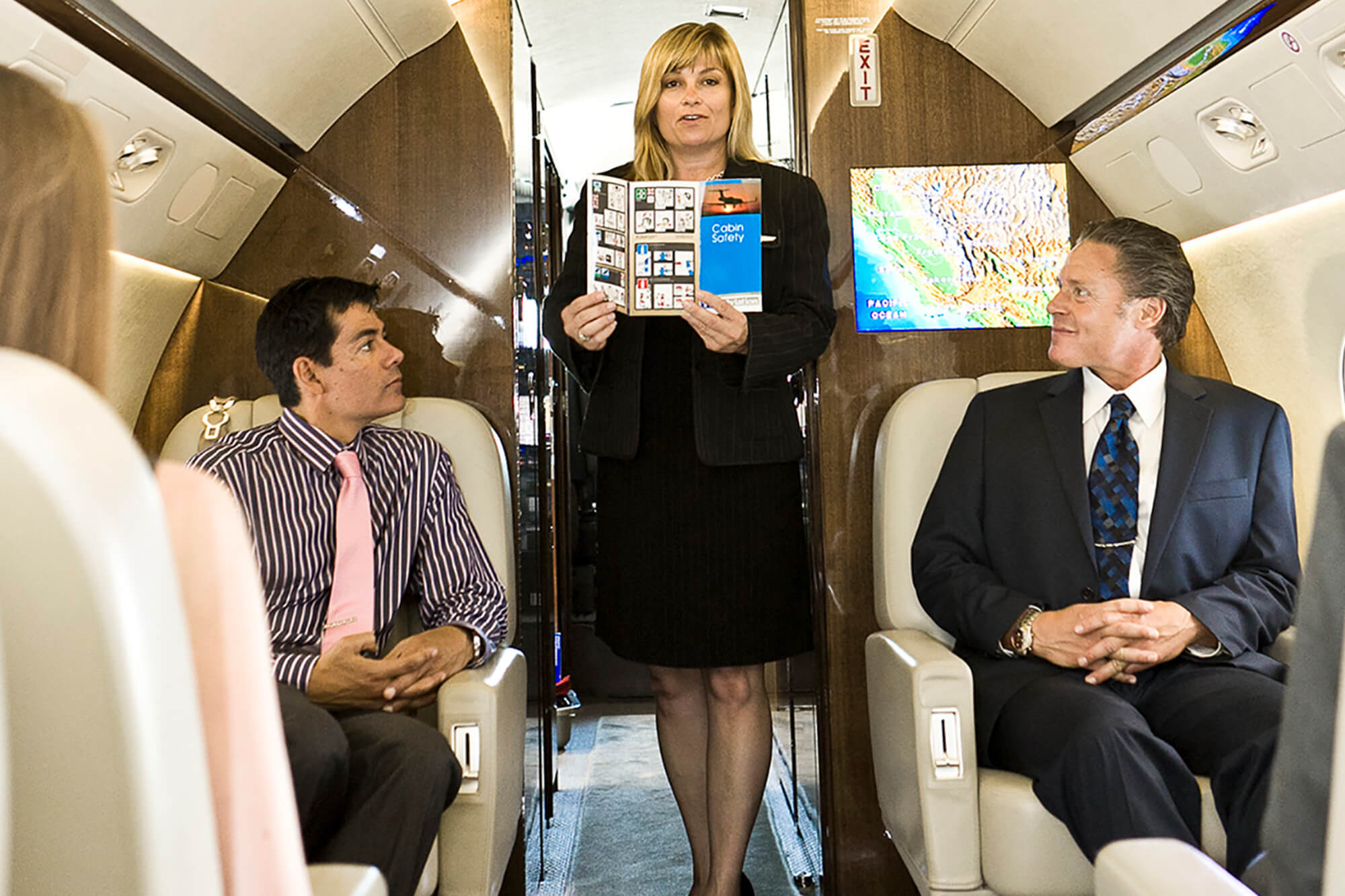

Sept. 23, 2019
There is no single path for starting and building a career as a flight crew member.
Business aviation flight attendants and flight technicians have well-defined responsibilities, but there is not one established path for starting and building a career in either field.
However, pursuing professional development and continuing education are two of the most common ways for flight attendants and flight technicians to advance.
Dana E. Cashman, lead flight attendant for a Texas-based energy company, began her career in 2001 when she met a flight attendant who said her company was looking for someone.
“It was everything I used to do on the [ship I worked on at the time], but they did it in the air, so I applied,” she recalled. “I got the job, and I’ve had a very blessed aviation career.”
Cashman became the lead flight attendant seven years ago when her company reorganized into two companies and the new company offered her the leadership position. She prepared for the opportunity by taking NBAA Professional Development Program courses, networking at industry conferences and seminars, taking advantage of employee leadership development programs, and obtaining scholarships. Starting as the only flight attendant on a single aircraft, Cashman now leads a team of six flight attendants who fly on three company aircraft.
“Once you’re a lead flight attendant, you have to find ways to grow as a person, as a flight attendant and as a manager,” Cashman said. “I work hard to improve continually, and I never pass up an opportunity for education. You should never be complacent.”
Armando V. Visitacion, now a senior flight technician with a California-based technology company, started his business aviation career 15 years ago, upon retiring from the U.S. Air Force after 22 years of service.
Visitacion spent his last seven years in the Air Force as a maintenance technician with a squadron of VIP transport aircraft. The crews of those aircraft included a flight attendant, and in the air, “we worked as a team, and I liked it and learned a lot,” he said.
Seeing a flight technician want ad after he retired from the Air Force, Visitacion said to himself, “I have some experience, so I applied.”
Today, seven flight technicians serve on two Gulfstream business jets operated by Visitacion’s company. Their primary responsibilities are maintaining the aircraft and providing cabin safety and service in flight.
“On trips we perform pre- and post-flight inspections and any needed maintenance, including the paperwork and return to service [documents],” explained Visitacion.
One of Visitacion’s additional duties is training and mentoring new hires in his flight department.
“It is a demanding job that requires certificated maintenance technicians who really know the airplane and have professional interpersonal skills equal to the demands of cabin safety and service,” Visitacion explained.
“Our continuing education ranges from cabin and culinary safety to [learning] new or improved aircraft systems, added Visitacion. Those interested in management should include business and management skills in their professional skill set.”


 International Business Aviation Council Ltd.
International Business Aviation Council Ltd.